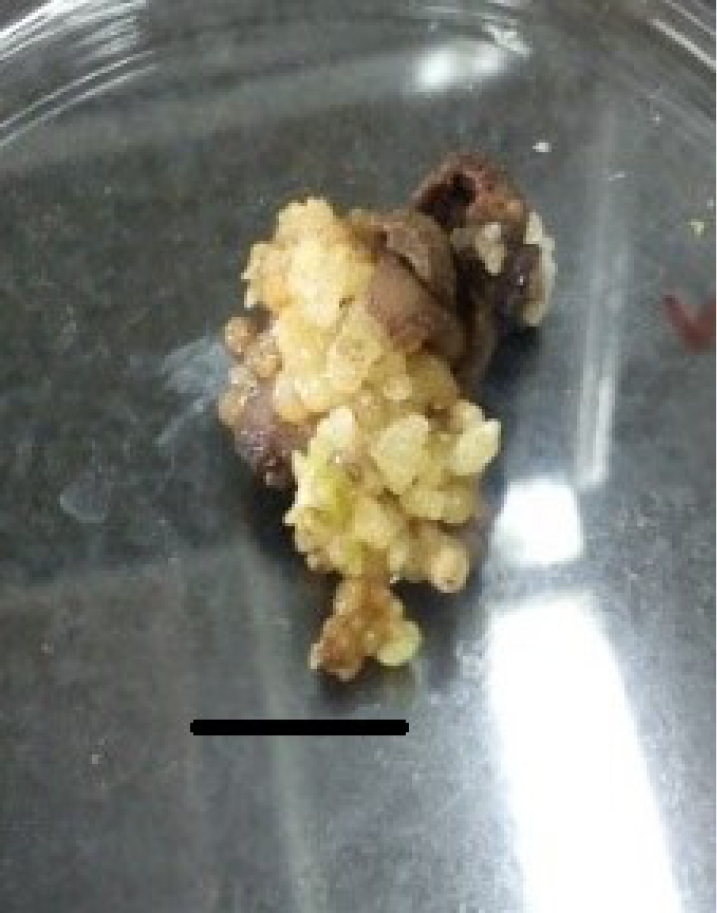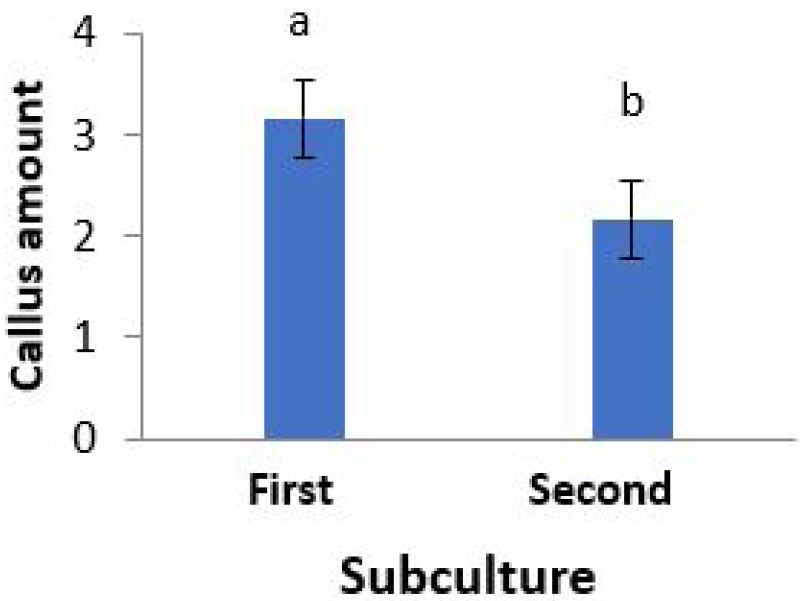Abstract
Leucojum aestivum is a valuable and endangered plant species with bulb scales best suited as explants in micropropagation. In the current study, its micropropagation was investigated by using two different explants and various concentrations and combinations of plant growth regulators (PGRs). Bulbs were first disinfected with benomyl® for 5 hours. After meeting the chilling requirements, two-scale and four-scale explants were provided for direct and indirect organogenesis. Explants were exposed to hot water, 70% ethanol and 2.5% sodium hypochlorite for further disinfestation. Four-scale explants were treated with different concentrations and combinations of naphthaleneacetic acid (NAA), 6-benzyladenine (BA), and kinetin (Kin) for bulblet regeneration. For callogenesis, 0.5 mg L-1 of BA combined with 1, 2, 3, 4, 5 or 6 mg L-1 of 2,4-dichlorophenoxyacetic acid (2,4-D) were applied. Regarding two-scale explants, different combinations and concentrations of BA, Indole-3-butyric acid (IBA) and NAA were used for bulblet induction, and various combinations of Indoleacetic acid (IAA), NAA, 2, 4-D and BA were used for callus induction. None of the two-scale explants responded to the bulblet regeneration and callus induction media. Unlike, four-scale explants regenerated bulblets and roots in the control medium and MS media enriched with different PGRs. Callus was generated on MS medium supplemented with 2,4-D and BA, and indirect regeneration was observed in some cases. On the control medium, the regenerated roots had a natural form, but in PGRs-rich media, they were deformed. Regarding the regeneration percentage, bulblet number and length and root length, no significant differences were found between the control and the best PGR-treatment in each case. Therefore, it seems logical suggesting not to use PGRs, which will considerably reduce the costs at large-scale production.
Keywords:
Amaryllidaceae; bulblet regeneration; callus induction; plant growth regulators

 Thumbnail
Thumbnail
 Thumbnail
Thumbnail
 Thumbnail
Thumbnail
 Thumbnail
Thumbnail
 Thumbnail
Thumbnail




